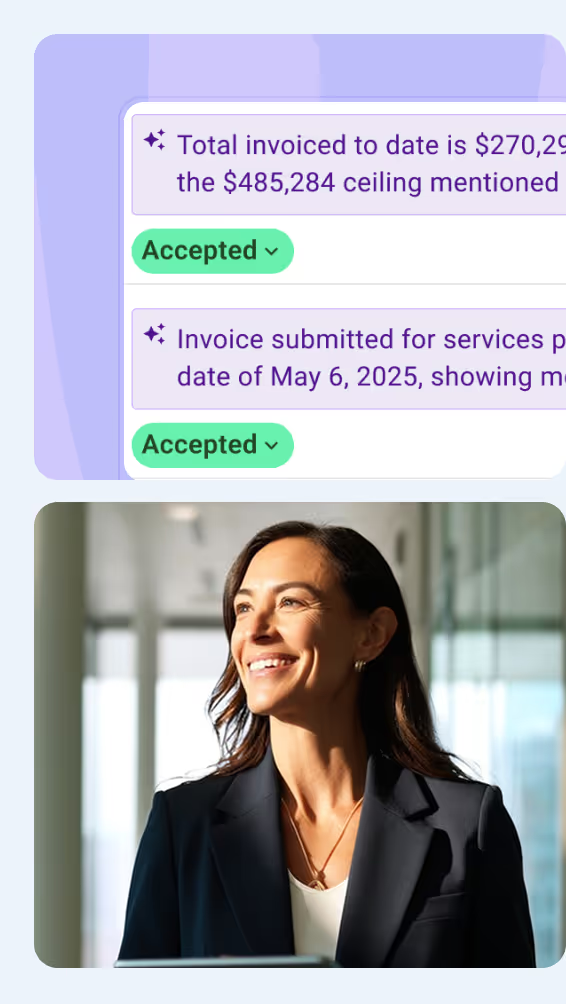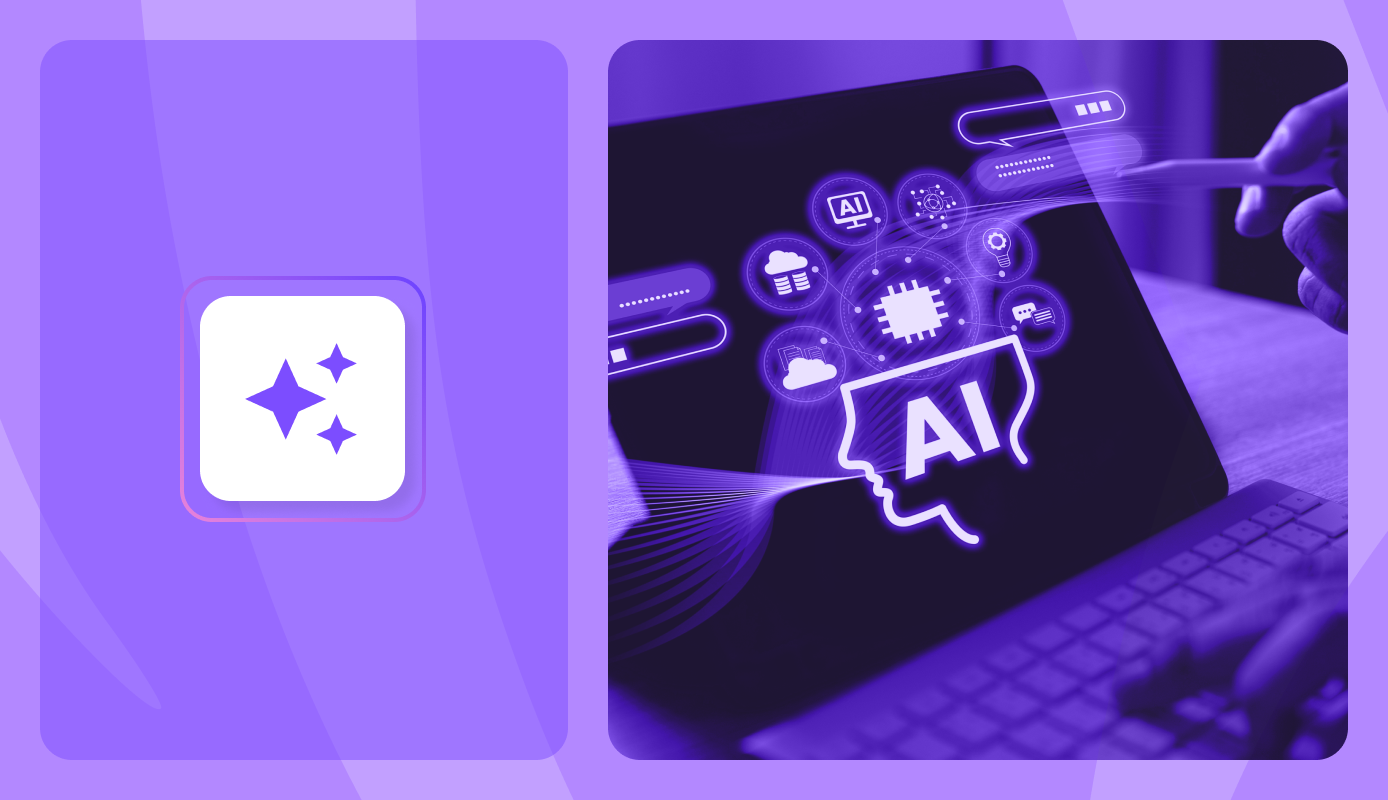Every project manager knows the drill. You need a monthly progress report for stakeholders. You dig through folders, open a few wrong templates, maybe check that shared drive from two years ago. Ten minutes later, you're building it from scratch anyway.
We built Mastt's AI Template Studio to kill this time waste. Just type "I need a project status report" and get three smart dashboard or report template recommendations with previews. Pick one, and it's instantly in your project.
The Technical Challenge: More Than Basic Search
Building AI that understands what dashboards and reports construction professionals actually need required solving complex problems. Project teams don't always use official template names. Someone types "cost tracker" when they need a "Budget Performance Dashboard." Another searches "monthly update" when they need a "Project Status Report Template."
This isn't a search problem but rather a language understanding challenge:
- Industry jargon varies wildly: Progress reports, status updates, monthly dashboards all mean similar things across different regions.
- Report types everywhere: Financial dashboards, safety reports, risk matrices, payment trackers - the AI needs to distinguish what users really want.
- Context-dependent queries: "Performance template" could mean cost performance, schedule performance, or contractor performance dashboards.
- Company-specific naming: Every organization has its own dashboard conventions and reporting standards.
We needed AI that genuinely understands what construction teams mean when they ask for reports, not just what they type. Traditional search would fail our users daily.
Natural Language Understanding Without Vector Embeddings
Most AI systems use vector databases for semantic search. We took a different path that proved faster and more maintainable for dashboard and template discovery.
Dynamic Context Retrieval
We engineered a system for dynamic context retrieval. It builds contextual prompts by identifying and retrieving relevant dashboards and templates based on the user's workspace.
This works similarly to RAG (Retrieval Augmented Generation) systems that fetch context, but we achieve it without vector stores. No need to setup or manage complex infrastructure.
Instead of converting templates to mathematical embeddings, we structure the dashboards and template data for direct AI reasoning. The results of this approach speak for themselves in real-world performance:
- Fast response times without complex similarity calculations or vector operations.
- Complete transparency in why specific dashboards or reports were recommended for better user trust.
- No vector database infrastructure to manage, scale, or maintain over time.
- Easy debugging when recommendations need tweaking or fine-tuning for accuracy.
This approach leverages the language model's native understanding rather than forcing everything through vector mathematics. Consequently, construction professionals receive better dashboard recommendations more quickly.
Template Knowledge Base Architecture
A template file alone tells the AI nothing useful. We built a comprehensive knowledge base that gives each Mastt dashboard and template rich context. Standard Mastt templates combine with user workspace templates in a structured format optimized for AI reasoning.
This was constructed by integrating two key sources: standard report templates combine with user-specific dashboard templates. Everything gets organized into a structured and easily accessible format. This forms a robust foundation for AI reasoning.
Our knowledge base includes:
- Template metadata: Project phase alignment, stakeholder audiences, and specific reporting use cases.
- Natural language descriptions: Multiple ways users might describe each dashboard or report naturally.
- Industry variations: How the same report appears across different construction sectors.
- Relationship mapping: Which dashboards and reports typically work together in project workflows.
Every entry helps the AI understand not just what a template contains, but when a project team would need that specific dashboard or report. This structured format makes intelligent recommendations possible.
Template Enrichment Pipeline
Dashboards and reports aren't static because projects evolve constantly. We implemented a template enrichment pipeline to enhance our knowledge base utility.
This process integrates metadata from resources already available on the Mastt website. The software automatically pulls this data into our templates. The result? Richer, more detailed context for the LLM's reasoning and output generation.
💡 Technical Innovation: The enrichment pipeline transforms basic templates into context-rich resources. When a user asks for help, the AI has layers of information. Industry best practices for dashboards, common report customizations, related visualizations - all available for more accurate output generation.
Semantic Processing: Teaching AI to Think Like a PM
Getting AI to recommend the right dashboards and reports requires more than keyword matching. We built multiple systems working together to understand intent and context.
Semantic Template Matching
Our semantic matching allows the AI to understand user intent. It accurately connects internal template identifiers with user-facing descriptions.
A consultant typing "payment tracker" triggers a comprehensive understanding. The AI recognizes related concepts: payment dashboards, progress claim reports, contractor payment summaries, payment certificate trackers.
This ensures high relevance in template selection through:
- NLP that identifies key entities in queries.
- Intent classification to determine what type of dashboard or report users need.
- Context awareness considering project type and current reporting phase.
- Confidence scoring to ensure recommendations make sense.
The LLM can accurately match what users ask for with what dashboards and reports actually deliver, even when the words don't align. When multiple users select the same template after similar queries, the system strengthens those connections.
Multi-Stage Prompt Architecture
We developed a sophisticated multi-stage prompt architecture utilizing advanced prompt engineering techniques. The strategic use of role-based system prompts positions the LLM as a domain expert in construction project management, guiding its conversational persona and knowledge application.
Through this architecture, the AI understands that financial dashboards, safety reports, risk matrices, and payment trackers aren't just visualizations - they're critical communication tools for project success.
To further refine LLM behavior and ensure consistent output formatting, we include concrete interaction examples directly within the system prompts. These examples serve as in-context learning demonstrations, guiding the LLM towards desired response structures and content:
- How to present three relevant dashboard or template options clearly with appropriate descriptions.
- When to include tips for report customization based on stakeholder needs.
- How to explain why each dashboard template was recommended for transparency.
- Proper handling of ambiguous queries and edge cases gracefully.
This architecture ensures consistent, helpful responses that guide the LLM towards desired response structures and content. The AI maintains a professional but conversational tone that construction professionals appreciate.
Continuous Improvement Through Feedback
Every interaction teaches our system. We implemented a feedback collection system where users can provide direct feedback on AI responses. Did they pick option one, two, or three? Did they browse for more options? Did they abandon the search?
This mechanism generates valuable training data. It's instrumental for several improvements:
- Ongoing model fine-tuning to improve dashboard and report recommendation accuracy.
- Identifying areas for prompt optimization and refinement strategies.
- Refining AI's understanding of user intent through behavioral patterns.
- Understanding emerging terminology and use cases in construction reporting.
Project teams unknowingly train the AI just by using it. Their choices make future recommendations better for everyone.
Multi-Model Architecture for Enterprise Reliability
Construction reporting software can't have downtime. We built AI Template Studio with multiple fail-safes and optimizations.
Environment-specific AI routing dynamically directs AI requests to different LLM providers based on the current deployment environment:
This capability allows for optimized resource utilization and failover strategies. Provider outages don't affect users. Performance stays consistent even during peak usage.
How Construction Teams Actually Use AI Template Studio
The technical complexity stays hidden. Project managers, consultants, and asset owners see a simple interface that fits their workflow perfectly. They experience AI that understands their reporting needs, not the other way around.
Here's exactly how the AI Template Studio process works from a user's perspective:
- Natural Language Query: Users type what they need in plain language - "I need a project status report" or ask for tips about specific dashboards.
- Intent Processing: The AI analyzes their query using NLP to understand intent. It searches through both standard Mastt dashboard templates and workspace-specific report options from "my workspace."
- Smart Recommendations: Within seconds, three curated options appear. Each recommendation includes descriptions and preview capabilities.
- Preview and Selection: Users can preview each dashboard or report template to see if it fits their needs. They can also browse the full template library if needed.
- Instant Integration: Click "use this template" and it pre-populates directly into their project. No downloading or manual copying required.
If the recommendations don't quite fit, users have options. They can browse the full template library or start from scratch. But most find what they need in those first three AI-powered suggestions.

NLP Impact: Measuring Real-World Results
Early adoption metrics validate our approach. Project managers and consultants using Mastt report significant time savings - not just in finding the right dashboards but in maintaining consistent reporting across projects. New team members get productive faster without learning complex template hierarchies.
More importantly, we're seeing behavioral changes. Teams use standardized dashboards and reports more consistently versus building from scratch. Organizations get better reporting standardization across project portfolios. Stakeholder communication improves from day one.
Lessons Learned: Building NLP for Construction Tech
Creating Mastt's AI Template Studio taught us valuable lessons about implementing NLP in construction technology. The journey challenged our assumptions about AI architecture and user needs.
Here are the key insights that shaped our approach:
- Simpler architecture often beats complexity: Avoiding vector databases reduced infrastructure overhead while improving performance and maintainability.
- Domain expertise embedded in prompts matters more: The best AI model fails without deep understanding of construction reporting workflows and terminology.
- User feedback loops are essential from day one: Construction professionals know what reports they need better than any algorithm - capturing their choices accelerated our improvement cycles.
- Multi-provider infrastructure isn't optional: Enterprise construction software requires bulletproof reliability through failover capabilities.
These lessons apply beyond dashboard and report recommendations. Any AI implementation in construction needs to prioritize practical simplicity, domain knowledge, and reliability over technical sophistication.
The goal remains constant: removing friction from routine tasks so construction professionals can focus on delivering successful projects.
The Future of AI-Powered Template Intelligence
Mastt's AI Template Studio gets smarter every day. Each query teaches the system something new about how construction teams actually talk about dashboards and reports. The feedback collection and model fine-tuning turn these insights into better recommendations tomorrow.
Here's what's exciting - the dual AI provider setup gives Mastt room to experiment. They can test cutting-edge LLM features on AWS Bedrock while keeping production stable on Anthropic.
As NLP technology leaps forward, AI Template Studio evolves right alongside it, staying in sync with how construction teams actually communicate their reporting needs.











